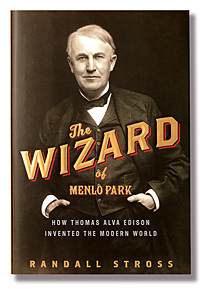(p. 5) Ms. Nyad has spent a lifetime in the water, chasing an elusive mark in marathon swimming, and she has written about the exhilarating out-of-body experience she has when powering through long distances. The medium makes it necessary to unplug; the blunting of the senses by water encourages internal retreat. Though we don’t all reach nirvana when we swim, swimming may well be that last refuge from connectivity — and, for some, the only way to find the solitary self.
. . .
For better or worse, the mind wanders: We are left alone with our thoughts, wherever they may take us. A lot of creative thinking happens when we’re not actively aware of it. A recent Carnegie Mellon study shows that to make good decisions, our brains need every bit of that room to meander. Other research has found that problem-solving tends to come most easily when our minds are unfocused, and while we’re exercising. The neurologist Oliver Sacks has written books in his head while swimming. “Theories and stories would construct themselves in my mind as I swam to and fro, or round and round Lake Jeff,” he writes in the essay “Water Babies.” Five hundred lengths in a pool were never boring or monotonous; instead, Dr. Sacks writes, “swimming gave me a sort of joy, a sense of well-being so extreme that it became at times a sort of ecstasy.” The body is engaged in full physical movement, but the mind itself floats, untethered. Beyond this, he adds, “there is all the symbolism of swimming — its imaginative resonances, its mythic potentials.”
Dr. Sacks describes a sublime state that is accessible to all, from his father, with his “great whalelike bulk,” who swam daily and elegantly until 94 years of age, to the very young. . . .
. . .
I asked Dara Torres, who has logged countless training hours for her five Olympics, what she thinks about when she’s swimming. “I’m always doing five things at once,” she told me by phone (at the time, she was driving a car). “So when I get in the water, I think about all the things that I have to do. But sometimes I go into a state — I don’t really think about anything.” The important thing, she says, is that the time is yours. “You can use it for anything. It depends where your head is at — it’s a reflection of where you are.”
The reflection of where you are: in essence, a status update to you, and only you. The experience is egalitarian. You don’t have to be a great swimmer to appreciate the benefits of sensory solitude and the equilibrium the water can bring.
For the full commentary, see:
Justin Gillis. “BY DEGREES; Freezing Out the Bigger Picture.” The New York Times (Tues., FEB. 11, 2014): D3.
(Note: ellipses added.)
(Note: the online version of the commentary has the date FEB. 10, 2014.)







